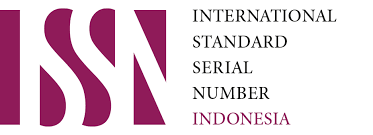REVIEW ARTIKEL: APLIKASI NANOPARTIKEL PADA FORMULASI SEDIAAN INSULIN ORAL
Abstrak
Perkembangan nanopartikel dalam bidang farmasetika semakin meluas dengan berbagai penelitian yang memformulasikan nanopartikel sebagai sistem penghantaran obat. Salah satunya yaitu sediaan insulin oral. Insulin merupakan hormon yang berperan penting dalam terapi diabetes melitus. Secara umum, insulin yang digunakan diberikan secara subkutan menimbulkan ketidaknyamanan bagi pasien dan berbagai efek samping. Berbagai penelitian kemudian mengembangkan sediaan insulin oral sebagai solusi dari permasalahan tersebut. Namun, pada praktiknya penghantaran insulin secara oral terhambat dengan karakter insulin yang mudah terdegradasi dan rusak di saluran gastrointestinal. Oleh karena itu, penelitian lainnya menemukan solusi lain dengan menggunakan nanocarrier sebagai pembawa insulin. Secara keseluruhan, studi menunjukkan formula nanocarrier insulin oral menghasilkan sediaan yang stabil, mampu melindungi insulin dari berbagai barrier saluran gastrointestinal, dan berpengaruh dalam menurunkan kadar glukosa darah tikus diabetes. Beberapa nanocarrier yang memenuhi kriteria karakterisasi nanopartikel yang baik untuk sistem penghantaran insulin oral yaitu pada nanocarrier berbasis PLGA-lipid-PEG, TMC-PLGA, Kitosan-PLGA, Kitosan-PSS-PGA, dan CMCD-g-Kitosan.
ABSTRACT
Insulin is a hormone that plays an important role in the treatment of diabetes mellitus. Generally, the used of insulin therapy is given subcutaneously, causing discomfort or inconveniences to the patient and various other side effects Various studies have developed oral insulin preparations as a solution to this problem. However practically, oral insulin administration is hampered by the character of insulin which is easily degraded in the gastrointestinal tract. Therefore, another study found another solution by applying a nano-carrier system as an insulin carrier. This review article aims to discuss the formulation of insulin preparations with nano-carrier systems. The data sources used as references in this article review consist of 25 international journals. From the review of this article, it was found that the nano-carrier system has good potential to be further developed as an oral insulin delivery system. Several oral insulin formulations with good nanoparticle characteristics are nano-carrier systems based on PLGA-lipid-PEG, TMC-PLGA, Ch-PLGA, Ch-PSS-PGA, CMCD-g-Ch, TMC-β-cyclodextrin, and Ch-TGA-based SNEDDS.
Teks Lengkap:
PDFReferensi
Alai, M. S., Lin, W. J., & Pingale, S. S. (2015). Application of polymeric nanoparticles and micelles in insulin oral delivery. Journal of Food and Drug Analysis, 23(3), 351–358. https://doi.org/10.1016/j.jfda.2015.01.007
Allen, T. M. (2004). Drug Delivery Systems: Entering the Mainstream. Science, 303(5665), 1818–1822. https://doi.org/10.1126/science.1095833
Andonova, V., & Peneva, P. (2018). Characterization Methods for Solid Lipid Nanoparticles (SLN) and Nanostructured Lipid Carriers (NLC). Current Pharmaceutical Design, 23(43), 6630–6642. https://doi.org/10.2174/1381612823666171115105721
Andreani, T., Souza, A. L. R. de, Kiill, C. P., Lorenzón, E. N., Fangueiro, J. F., Calpena, A. C., Chaud, M. V., Garcia, M. L., Gremião, M. P. D., Silva, A. M., & Souto, E. B. (2014). Preparation and characterization of PEG-coated silica nanoparticles for oral insulin delivery. International Journal of Pharmaceutics, 473(1–2), 627–635. https://doi.org/10.1016/j.ijpharm.2014.07.049
Andrews, C. W., Bennett, L., & Yu, L. X. (2000). Predicting Human Oral Bioavailability of a Compound: Development of a Novel Quantitative Structure-Bioavailability Relationship. Pharmaceutical Research, 17(6), 639–644.
Banerjee, A., Qi, J., Gogoi, R., Wong, J., & Mitragotri, S. (2016). Role of nanoparticle size, shape and surface chemistry in oral drug delivery. Journal of Controlled Release, 238, 176–185. https://doi.org/10.1016/j.jconrel.2016.07.051
Barhoum, A., & Makhlouf, A. S. H. (2018). Fundamentals of Nanoparticles. Elsevier Inc.
Baskar, G., Garrick, B. G., Lalitha, K., & Chamundeeswari, M. (2018). Gold nanoparticle mediated delivery of fungal asparaginase against cancer cells. Journal of Drug Delivery Science and Technology, 44, 498–504. https://doi.org/10.1016/j.jddst.2018.02.007
Bernkop-Schnürch, A. (1998). The use of inhibitory agents to overcome the enzymatic barrier to perorally administered therapeutic peptides and proteins. Journal of Controlled Release, 52(1–2), 1–16. https://doi.org/10.1016/S0168-3659(97)00204-6
Bhatia, S. (2016). Natural Polymer Drug Delivery Systems. Springer International Publishing.
Boushra, M., Tous, S., Fetih, G., Xue, H.-Y., & Wong, H.-L. (2019). Development of bi-polymer lipid hybrid nanocarrier (BLN) to improve the entrapment and stability of insulin for efficient oral delivery. Journal of Drug Delivery Science and Technology, 49, 632–641. https://doi.org/10.1016/j.jddst.2019.01.007
Caldorera-Moore, M., Guimard, N., Shi, L., & Roy, K. (2010). Designer nanoparticles: Incorporating size, shape and triggered release into nanoscale drug carriers. Expert Opinion on Drug Delivery, 7(4), 479–495. https://doi.org/10.1517/17425240903579971
Chamundeeswari, M., Jeslin, J., & Verma, M. L. (2019). Nanocarriers for drug delivery applications. Environmental Chemistry Letters, 17(2), 849–865. https://doi.org/10.1007/s10311-018-00841-1
Chen, M., Liu, X., & Fahr, A. (2011). Skin penetration and deposition of carboxyfluorescein and temoporfin from different lipid vesicular systems: In vitro study with finite and infinite dosage application. International Journal of Pharmaceutics, 408(1–2), 223–234. https://doi.org/10.1016/j.ijpharm.2011.02.006
Chen, M.-C., Sonaje, K., Chen, K.-J., & Sung, H.-W. (2011). A review of the prospects for polymeric nanoparticle platforms in oral insulin delivery. Biomaterials, 32(36), 9826–9838. https://doi.org/10.1016/j.biomaterials.2011.08.087
Chou, L. Y. T., Ming, K., & Chan, W. C. W. (2011). Strategies for the intracellular delivery of nanoparticles. Chem. Soc. Rev., 40(1), 233–245. https://doi.org/10.1039/C0CS00003E
Clogston, J. D., & Patri, A. K. (2011). Zeta Potential Measurement. In S. E. McNeil (Ed.), Characterization of Nanoparticles Intended for Drug Delivery (Vol. 697, pp. 63–70). Humana Press. https://doi.org/10.1007/978-1-60327-198-1_6
Danaei, M., Dehghankhold, M., Ataei, S., Hasanzadeh Davarani, F., Javanmard, R., Dokhani, A., Khorasani, S., & Mozafari, M. (2018). Impact of Particle Size and Polydispersity Index on the Clinical Applications of Lipidic Nanocarrier Systems. Pharmaceutics, 10(2), 57. https://doi.org/10.3390/pharmaceutics10020057
de Araújo, T. M., Teixeira, Z., Barbosa-Sampaio, H. C., Rezende, L. F., Boschero, A. C., Durán, N., & Höehr, N. F. (2013). Insulin-Loaded Poly(ε-Caprolactone) Nanoparticles: Efficient, Sustained and Safe Insulin Delivery System. Journal of Biomedical Nanotechnology, 9(6), 1098–1106. https://doi.org/10.1166/jbn.2013.1607
Desai, M. P., Labhasetwar, V., Walter, E., Levy, R. J., & Amidon, G. L. (1997). The Mechanism of Uptake of Biodegradable Microparticles in Caco-2 Cells is Size Dependent. Pharmaceutical Research, 14(11), 1568–1573.
Diop, M., Auberval, N., Viciglio, A., Langlois, A., Bietiger, W., Mura, C., Peronet, C., Bekel, A., Julien David, D., Zhao, M., Pinget, M., Jeandidier, N., Vauthier, C., Marchioni, E., Frere, Y., & Sigrist, S. (2015). Design, characterisation, and bioefficiency of insulin–chitosan nanoparticles after stabilisation by freeze-drying or cross-linking. International Journal of Pharmaceutics, 491(1–2), 402–408. https://doi.org/10.1016/j.ijpharm.2015.05.065
Goldberg, M., & Gomez-Orellana, I. (2003). Challenges for the oral delivery of macromolecules. Nature Reviews Drug Discovery, 2(4), 289–295. https://doi.org/10.1038/nrd1067
Han, L., Zhao, Y., Yin, L., Li, R., Liang, Y., Huang, H., Pan, S., Wu, C., & Feng, M. (2012). Insulin-Loaded pH-Sensitive Hyaluronic Acid Nanoparticles Enhance Transcellular Delivery. AAPS PharmSciTech, 13(3), 836–845. https://doi.org/10.1208/s12249-012-9807-2
He, C., Yin, L., Tang, C., & Yin, C. (2012). Size-dependent absorption mechanism of polymeric nanoparticles for oral delivery of protein drugs. Biomaterials, 33(33), 8569–8578. https://doi.org/10.1016/j.biomaterials.2012.07.063
Hu, X.-B., Tang, T.-T., Li, Y.-J., Wu, J.-Y., Wang, J.-M., Liu, X.-Y., & Xiang, D.-X. (2019). Phospholipid complex based nanoemulsion system for oral insulin delivery: Preparation, in vitro, and in vivo evaluations. International Journal of Nanomedicine, Volume 14, 3055–3067. https://doi.org/10.2147/IJN.S198108
Jain, A., & Jain, S. K. (2015). L-Valine appended PLGA nanoparticles for oral insulin delivery. Acta Diabetologica, 52(4), 663–676. https://doi.org/10.1007/s00592-015-0714-3
Ji, N., Hong, Y., Gu, Z., Cheng, L., Li, Z., & Li, C. (2019). Chitosan coating of zein-carboxymethylated short-chain amylose nanocomposites improves oral bioavailability of insulin in vitro and in vivo. Journal of Controlled Release, 313, 1–13. https://doi.org/10.1016/j.jconrel.2019.10.006
Joshi, M. D., Patravale, V., & Prabhu, R. (2015). Polymeric nanoparticles for targeted treatment in oncology: Current insights. International Journal of Nanomedicine, 1001. https://doi.org/10.2147/IJN.S56932
Lee, B. K., Yun, Y. H., & Park, K. (2015). Smart nanoparticles for drug delivery: Boundaries and opportunities. Chemical Engineering Science, 125, 158–164. https://doi.org/10.1016/j.ces.2014.06.042
Li, L., Yang, L., Li, M., & Zhang, L. (2017). A cell-penetrating peptide mediated chitosan nanocarriers for improving intestinal insulin delivery. Carbohydrate Polymers, 174, 182–189. https://doi.org/10.1016/j.carbpol.2017.06.061
Liu, Y., Zhao, Y., Wang, L., Ma, C., Zhao, K., & Feng, N. (2013). Preparation and characterization of tetrandrine-phospholipid complex loaded lipid nanocapsules as potential oral carriers. International Journal of Nanomedicine, 4169. https://doi.org/10.2147/IJN.S50557
Lopes, M., Shrestha, N., Correia, A., Shahbazi, M.-A., Sarmento, B., Hirvonen, J., Veiga, F., Seiça, R., Ribeiro, A., & Santos, H. A. (2016). Dual chitosan/albumin-coated alginate/dextran sulfate nanoparticles for enhanced oral delivery of insulin. Journal of Controlled Release, 232, 29–41. https://doi.org/10.1016/j.jconrel.2016.04.012
Mansourpour, M., Mahjub, R., Amini, M., Ostad, S. N., Shamsa, E. S., Rafiee- Tehrani, M., & Dorkoosh, F. A. (2015). Development of Acid-Resistant Alginate/Trimethyl Chitosan Nanoparticles Containing Cationic β-Cyclodextrin Polymers for Insulin Oral Delivery. AAPS PharmSciTech, 16(4), 952–962. https://doi.org/10.1208/s12249-014-0282-9
McCall, R. L., & Sirianni, R. W. (2013). PLGA Nanoparticles Formed by Single- or Double-emulsion with Vitamin E-TPGS. Journal of Visualized Experiments, 82, 51015. https://doi.org/10.3791/51015
Moyano, D. F., & Rotello, V. M. (2011). Nano Meets Biology: Structure and Function at the Nanoparticle Interface. Langmuir, 27(17), 10376–10385. https://doi.org/10.1021/la2004535
MuÈller, R. H., MaÈder, K., & Gohla, S. (2000). Solid lipid nanoparticles (SLN) for controlled drug delivery ± a review of the state of the art. European Journal of Pharmaceutics and Biopharmaceutics, 17.
Mukhopadhyay, P., Mishra, R., Rana, D., & Kundu, P. P. (2012). Strategies for effective oral insulin delivery with modified chitosan nanoparticles: A review. Progress in Polymer Science, 37(11), 1457–1475. https://doi.org/10.1016/j.progpolymsci.2012.04.004
Pathak, Y., & Thassu, D. (2009). Drug Delivery Nanoparticles Formulation and Characterization. Informa Healthcare.
Puri, M., Barrow, C. J., & Verma, M. L. (2013). Enzyme immobilization on nanomaterials for biofuel production. Trends in Biotechnology, 31(4), 215–216. https://doi.org/10.1016/j.tibtech.2013.01.002
Putri, D. C. A., Dwiastuti, R., Marchaban, M., & Nugroho, A. K. (2017). OPTIMIZATION OF MIXING TEMPERATURE AND SONICATION DURATION IN LIPOSOME PREPARATION. Journal of Pharmaceutical Sciences and Community, 14(2), 79–85. https://doi.org/10.24071/jpsc.142728
Qi, J., Wu, W., Xiaoyang Li, Yunchang Xie, Xi Zhang, Shunwen Hu, Ying Xu, & Lu, Y. (2012). Nanoemulsions coated with alginate/chitosan as oral insulin delivery systems: Preparation, characterization, and hypoglycemic effect in rats. International Journal of Nanomedicine, 23. https://doi.org/10.2147/IJN.S38507
Reboredo, C., González-Navarro, C. J., Martínez-López, A. L., Martínez-Ohárriz, C., Sarmento, B., & Irache, J. M. (2021). Zein-Based Nanoparticles as Oral Carriers for Insulin Delivery. Pharmaceutics, 14(1), 39. https://doi.org/10.3390/pharmaceutics14010039
Sakloetsakun, D., Dünnhaupt, S., Barthelmes, J., Perera, G., & Bernkop-Schnürch, A. (2013). Combining two technologies: Multifunctional polymers and self-nanoemulsifying drug delivery system (SNEDDS) for oral insulin administration. International Journal of Biological Macromolecules, 61, 363–372. https://doi.org/10.1016/j.ijbiomac.2013.08.002
Sarmento, B., Ribeiro, A., Veiga, F., Sampaio, P., Neufeld, R., & Ferreira, D. (2007). Alginate/Chitosan Nanoparticles are Effective for Oral Insulin Delivery. Pharmaceutical Research, 24(12), 2198–2206. https://doi.org/10.1007/s11095-007-9367-4
Schafer, V., Briesen, H. von, Andreesen, R., Steffan, A.-M., Royer, C., Troster, S., Kreuter, J., & Waigmann, H. R. (1992). Phagocytosis of Nanoparticles by Human Immunodeficiency Virus (HIV)-Infected Macrophages: A possibility for Antiviral Drug Targeting. Pharmaceutical Research, 9(4), 541–546.
Schilling, R. J., & Mitra, A. K. (1991). Degradation of Insulin by Trypsin and Alpha-Chymotrypsin. Pharmaceutical Research, 8(6), 721–727.
Sharma, R., Gupta, U., Garg, N. K., Tyagi, R. K., & Jain, N. K. (2015). Surface engineered and ligand anchored nanobioconjugate: An effective therapeutic approach for oral insulin delivery in experimental diabetic rats. Colloids and Surfaces B: Biointerfaces, 127, 172–181. https://doi.org/10.1016/j.colsurfb.2015.01.035
Sheng, J., Han, L., Qin, J., Ru, G., Li, R., Wu, L., Cui, D., Yang, P., He, Y., & Wang, J. (2015). N -Trimethyl Chitosan Chloride-Coated PLGA Nanoparticles Overcoming Multiple Barriers to Oral Insulin Absorption. ACS Applied Materials & Interfaces, 7(28), 15430–15441. https://doi.org/10.1021/acsami.5b03555
Song, M., Wang, H., Chen, K., Zhang, S., Yu, L., Elshazly, E. H., Ke, L., & Gong, R. (2018). Oral insulin delivery by carboxymethyl-β-cyclodextrin-grafted chitosan nanoparticles for improving diabetic treatment. Artificial Cells, Nanomedicine, and Biotechnology, 46(sup3), S774–S782. https://doi.org/10.1080/21691401.2018.1511575
Sood, A., & Panchagnula, R. (2001). Peroral Route: An Opportunity for Protein and Peptide Drug Delivery. Chemical Reviews, 101(11), 3275–3304. https://doi.org/10.1021/cr000700m
Strachan, M. W. J., & Frier, B. M. (2013). Insulin Therapy: A Pocket Guide. Springer-Verlag.
Sun, S., Yamamoto, H., Kawashima, Y., Cui, F., Yan, P., & Liang, N. (2015). PH-sensitive poly(lactide-co-glycolide) nanoparticle composite microcapsules for oral delivery of insulin. International Journal of Nanomedicine, 3489. https://doi.org/10.2147/IJN.S81715
Sun, T., Zhang, Y. S., Pang, B., Hyun, D. C., Yang, M., & Xia, Y. (2014). Engineered Nanoparticles for Drug Delivery in Cancer Therapy. Angewandte Chemie International Edition, n/a-n/a. https://doi.org/10.1002/anie.201403036
Urimi, D., Agrawal, A. K., Kushwah, V., & Jain, S. (2019). Polyglutamic Acid Functionalization of Chitosan Nanoparticles Enhances the Therapeutic Efficacy of Insulin Following Oral Administration. AAPS PharmSciTech, 20(3), 131. https://doi.org/10.1208/s12249-019-1330-2
Verma, M. L., Barrow, C. J., Kennedy, J. F., & Puri, M. (2012). Immobilization of β-d-galactosidase from Kluyveromyces lactis on functionalized silicon dioxide nanoparticles: Characterization and lactose hydrolysis. International Journal of Biological Macromolecules, 50(2), 432–437. https://doi.org/10.1016/j.ijbiomac.2011.12.029
Verma, M. L., Barrow, C. J., & Puri, M. (2013). Nanobiotechnology as a novel paradigm for enzyme immobilisation and stabilisation with potential applications in biodiesel production. Applied Microbiology and Biotechnology, 97(1), 23–39. https://doi.org/10.1007/s00253-012-4535-9
Walker, R. I., & Owen, R. L. (1990). Intestinal Barriers to Bacteria and their Toxins. Annual Review of Medicine, 41, 393–400.
Wang, S., Sun, Zhu, Du, Liu, & Qian, W.-Y. (2012). PH-sensitive strontium carbonate nanoparticles as new anticancer vehicles for controlled etoposide release. International Journal of Nanomedicine, 5781. https://doi.org/10.2147/IJN.S34773
Wong, C. Y., Al-Salami, H., & Dass, C. R. (2017). Potential of insulin nanoparticle formulations for oral delivery and diabetes treatment. Journal of Controlled Release, 264, 247–275. https://doi.org/10.1016/j.jconrel.2017.09.003
Wong, C. Y., Martinez, J., Zhao, J., Al-Salami, H., & Dass, C. R. (2020). Development of orally administered insulin-loaded polymeric-oligonucleotide nanoparticles: Statistical optimization and physicochemical characterization. Drug Development and Industrial Pharmacy, 46(8), 1238–1252. https://doi.org/10.1080/03639045.2020.1788061
Wong, T. W. (2010). Design of oral insulin delivery systems. Journal of Drug Targeting, 18(2), 79–92. https://doi.org/10.3109/10611860903302815
Wu, Z. M., Ling, L., Zhou, L. Y., Guo, X. D., Jiang, W., Qian, Y., Luo, K. Q., & Zhang, L. J. (2012). Novel preparation of PLGA/HP55 nanoparticles for oral insulin delivery. Nanoscale Research Letters, 7(1), 299. https://doi.org/10.1186/1556-276X-7-299
Yang, J., Sun, H., & Song, C. (2012). Preparation, characterization and in vivo evaluation of pH-sensitive oral insulin-loaded poly(lactic-co-glycolicacid) nanoparticles. Diabetes, Obesity and Metabolism, 14(4), 358–364. https://doi.org/10.1111/j.1463-1326.2011.01546.x
Yavuz, M. S., Cheng, Y., Chen, J., Cobley, C. M., Zhang, Q., Rycenga, M., Xie, J., Kim, C., Song, K. H., Schwartz, A. G., Wang, L. V., & Xia, Y. (2009). Gold nanocages covered by smart polymers for controlled release with near-infrared light. Nature Materials, 8(12), 935–939. https://doi.org/10.1038/nmat2564
Yu, F., Li, Y., Liu, C. S., Chen, Q., Wang, G. H., Guo, W., Wu, X. E., Li, D. H., Wu, W. D., & Chen, X. D. (2015). Enteric-coated capsules filled with mono-disperse micro-particles containing PLGA-lipid-PEG nanoparticles for oral delivery of insulin. International Journal of Pharmaceutics, 484(1–2), 181–191. https://doi.org/10.1016/j.ijpharm.2015.02.055
Zhang, X., Sun, M., Zheng, A., Cao, D., Bi, Y., & Sun, J. (2012). Preparation and characterization of insulin-loaded bioadhesive PLGA nanoparticles for oral administration. European Journal of Pharmaceutical Sciences, 45(5), 632–638. https://doi.org/10.1016/j.ejps.2012.01.002
DOI: https://doi.org/10.24198/farmaka.v20i1.33717
DOI (PDF): https://doi.org/10.24198/farmaka.v20i1.33717.g17347
Refbacks
- Saat ini tidak ada refbacks.
Sitasi manajer:
Jurnal ini diindeks dalam:




Farmaka by Universitas Padjadjaran is licensed under a Creative Commons Attribution-NonCommercial 4.0 International License
Copyright © 2013 Jurnal Farmaka - All Right Reserved

